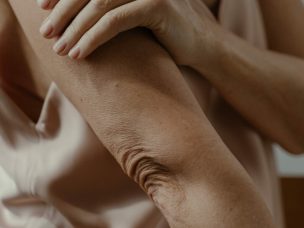Hives
Managing Resistant Hives Effectively Without Monoclonal Antibodies
A recent randomized controlled trial shows that patients who do not respond to initial therapy with nonsedating H1-antihistamines might respond to these drugs when given at four-fold higher dosages. Urticaria is a common dermatological condition that can be acute or chronic. Chronic urticaria (CU) persists for more than 6 weeks and requires frequent healthcare visits,...
Safety of Omalizumab in Chronic Urticaria During Pregnancy
Omalizumab in the treatment of chronic spontaneous urticaria was not associated with any negative maternal or fetal outcomes when administered before and after pregnancy, in a recent retrospective study. Omalizumab is a monoclonal antibody against immunoglobulin E (IgE) that is recommended for individuals with medication-resistant moderate-to-severe persistent asthma, chronic spontaneous urticaria (CSU), and nasal polyps...
Morphological Classification of Skin Eruptions in Chronic Spontaneous Urticaria
A hierarchical mathematical modeling approach accurately described the pathophysiological states of chronic spontaneous urticaria based on the geometrical features of skin eruptions, which may improve diagnostic accuracy and disease management. Chronic spontaneous urticaria (CSU) is a cutaneous disorder associated with wheals of different morphological characteristics. The pathophysiological states of the disease involve the coagulation system,...
Epidemiological and Clinical Characteristics of Patients With Chronic Spontaneous Urticaria
A cross-sectional study of chronic spontaneous urticaria found that adult patients have a greater incidence of autoantibodies and metabolic syndromes, whereas atopy and autoimmune disorders have a greater incidence in pediatric patients. Chronic spontaneous urticaria (CSU) is characterized by urticaria lasting for 6 weeks or longer, usually occurring in adults aged 20–40. CSU is associated...
Long-Term Assessment of Omalizumab Effectiveness in Chronic Spontaneous Urticaria
Compared to the systemic immune-inflammation index, the systemic inflammatory response index has a better predictive value for drug survival in chronic spontaneous urticaria patients treated with omalizumab, according to the results of a retrospective study. Chronic spontaneous urticaria (CSU) is described as a mast-cell-associated disease. Patients suffering from CSU suffer from recurrent wheals and hives...
Social Networks for Improving Rituximab Treatment Outcomes for Demyelinating Diseases
Utilizing social networks can improve efficacy and safety outcomes in low-dose rituximab therapy for central nervous system demyelinating diseases, according to a recent study. The impact of social media extends into the domains of healthcare and medical research. The complex nature of central nervous system (CNS) demyelinating diseases requires ongoing research, careful treatment monitoring, and...
Navigating Inflammatory Bowel Disease in Pregnant African-American Women
Medically reviewed by Dr. Shani S. Saks, D.O. on August 2, 2023 African-American Women have significantly higher pregnancy complication rates than White women. Maternal mortality rates among AAW are three times higher than for White women due to poor healthcare access, structural and medical racism, and resultant stresses. The presence of inflammatory bowel disease in...
Acupuncture’s Effect On Cytokine and Chemokine Profiles in Allergic Rhinitis
Acupuncture does not appear to have an immunological effect on the Th1–Th2 imbalance; however, acupuncture treatment reduces levels of eotaxin and other nonspecific pro-inflammatory cytokines in patients with seasonal allergic rhinitis. As a supplementary and integrative medical therapy, acupuncture targets specific acupoints to enhance the treatment of various disorders. As acupuncture is a relatively risk-free...
Patients With Disabilities Denied Surgical Treatment for Lung Cancer
In the United States, thousands of patients are treated for non-small cell lung cancer (NSCLC) each year. For localized NSCLC, there is a 63% 5-year survival rate. There is a 35% 5-year survival rate for regional NSCLC. With the improvements made in lung cancer treatment, including new targeted treatments and immunotherapies, patients with NSCLC are...
More Medical News














